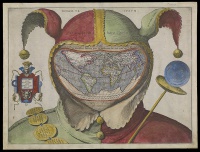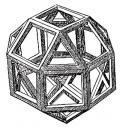Atlas
From The Art and Popular Culture Encyclopedia

Fool's Cap World Map (c. 1590s) by anonymous
|
Related e |
|
Featured: |
An atlas is a collection of maps; it is typically a bundle of maps of Earth or of a region of Earth.
Atlases have traditionally been bound into book form, but today many atlases are in multimedia formats. In addition to presenting geographic features and political boundaries, many atlases often feature geopolitical, social, religious and economic statistics. They also have information about the map and places in it.
[edit]
See also
- Atlas (architecture)
- Atlas (mythology)
- Atlantic Ocean
- Atlantis
- Cartography
- Fictitious entry
- Geography
- Manifold
- Theatrum Orbis Terrarum
- Bird atlas
- Cloud atlas
- Google Maps
- Star atlas
- Atlas Press
- Atlas des chemins vicinaux
Unless indicated otherwise, the text in this article is either based on Wikipedia article "Atlas" or another language Wikipedia page thereof used under the terms of the GNU Free Documentation License; or on research by Jahsonic and friends. See Art and Popular Culture's copyright notice.

